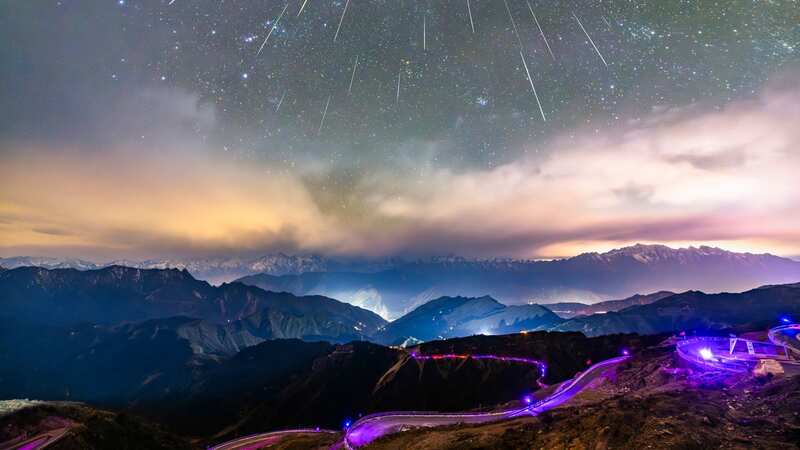

Brit stargazers can enjoy two a stunning night spectacle with a meteor shower peaking this week bringing two "shooting stars" every minute.
The Quadrantid meteor shower is one of the best of the year with the sky lit up in late December and early January. The show is created by fragments of dust and rocks in space crashing into Earth's atmosphere at a whopping 70 kilometres per second.
And as the meteors vaporise they cause a stunning streak of light. When the display reaches its peak this week there are as many as two "shooting stars" that can be seen in the meteor shower each minute during a sharp peak that lasts several hours. It means people can see around 110 meteors an hour.
The best chance to see it in all its glory on Wednesday and Thursday, weather permitting. To catch this celestial event, you need to gaze up into a clear sky after midnight and look out for the constellation known as the Big Dipper. Current weather predictions are for unsettled conditions in mid-week so it may be a case of glimpsing the display during breaks in the cloud.
Royal Museums Greenwich says the Quadrantid is "among the strongest and most consistent meteor showers of the year, with a maximum rate of 110 meteors per hour on a clear night".
 Huge meteorite caught on camera leaves locals shaken by 'loud explosion'
Huge meteorite caught on camera leaves locals shaken by 'loud explosion'
This meteor shower gets its name from the now-defunct constellation Quadrans Muralis (the Mural Quadrant), part of a constellation system created by French astronomer Jerome Lalande in 1795. The radiant point of the Quadrantids, the apparent location from where the meteors seem to originate, was located in this obsolete constellation.
The Quadrantids are believed to come from the debris left by the asteroid 2003 EH1, thought to be a piece of a comet that broke apart several centuries ago. As Earth passes through this debris field left by the comet's orbit, the particles enter our atmosphere, burning up and causing the meteor shower.
And the best time of the night to see them is in the wee hours before dawn but, this meteor shower's peak is quite brief compared to others, so you'll need good timing as well as clear skies to catch a glimpse.
* An AI tool was used to add an extra layer to the editing process for this story. You can report any errors to [email protected]